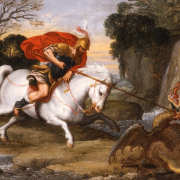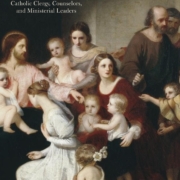Made in My Image: Disembodied Communication & Transgenderism by Dr. Emily Dowdell
I have a theory. If you’re trained in social sciences or loosely familiar with statistics, you have probably heard the phrase “correlation is not causation.” But there’s a trend in society, the spike in gender dysphoria and transgender identification, that I wonder about. Many suggest that the sudden rise in popularity of transgender identification is connected to greater openness and reduced social stigma around sexuality and gender. There could be something to that. But what if it has less to do with the acceptance of the belief that sex and gender are separable and more to do with disembodied communication? Is it merely coincidental that it trends alongside increased internet-based communication?
Internet communication, especially through the creation of social media and dating profiles, is reductionistic. It is common for people looking for connection on these apps to peruse and rule out potential relationships based on affiliation, appearance, opinions, and interests placed on a profile. We become accustomed to limiting our understanding of others to these external attributes. Making friends or romantic connections online is more about curating the perfect collection of interest or putting up the perfect picture to attract similar people, than it is about building a relationship through shared experiences. When you add videogames and virtual character customization to the mix, it changes the way people interact and think of themselves. There are so many video games out there that let you tailor your character to look, sound, and move in almost any way you like. As technology continues to advance, it seems that the options for custom digital creation approach only the limits of the imagination. Is it not surprising then, that the body is often seen as a limitation or something to be customized to match internal preferences? When the body is separated from the person and becomes an obstacle to self-revelation, we begin to view it as an object that can be shaped and changed according to my will.
Children and adolescents being raised in this digital environment of crafting their own identities and appearances in a virtual world may think the real world abides by the same principles. In one way, the transgender movement feels appealing, especially to adolescents, because it matches the culture of online communication – that I can make myself into whomever I want and should have complete control over how I appear and am perceived. The pressure of having to determine one’s own identity and know how all of these different traits will be received by others generates significant distress, anxiety, and self-consciousness. Building friendships becomes more about gauging feedback and less about discovering oneself and the other through shared interests and experiences. Theology of the Body emphasizes the unity of body and personhood, affirming the reality that the body reveals the person. From this perspective, identity is a gift to be discovered, rather than created. When our identity is anchored in a relationship with God, who creates us male or female, it is fundamentally more secure and constant.
Human beings are more invigorated when we feel a sense of connection over a common cause or shared interest and belong to a group. Unfortunately, there are downsides to this effect. To preserve the sense of community and protect the ideals that bind the group, the group may suppress dissent, stoke fear of outside information, and focus exclusively on content that supports the group agenda. When group members hear only one perspective exclusively, their ideas become more entrenched and more extreme. If you mix this extreme, emotionally driven attachment to the group cause with a sense of anonymity, individuals lose their inhibitions and act in ways discordant with their prior moral sensibilities. This is what we often see in the destructive acts of violence within a mob. No one individual is culpable for the violence; it is attributed to the group or the movement as a whole. The Internet encourages this kind of group formation. People get sucked into the power of groupthink and ideology. They lose the ability to connect on a personal level.
I strongly believe that as human beings we are called to approach one another with humility and reverence. I am very saddened by the ways in which individuals who are questioning or exploring their identity are mistreated, ridiculed, and feel marginalized. I can empathize and have compassion for the experiences of individual members of larger groups feeling oppressed or unseen. However, I find myself frustrated when group identification becomes the focus. Group identification is inherently polarizing. It is as if to offer respect to one group, the other group needs to be completely stripped of all value. Speaking at this group level creates more division and the person is often lost in the mix. That is because speaking in such broad terms can never truly capture the fullness of a person’s experience. Psychosexual development is a deeply personal and complicated process. When we apply broad stereotypes and terms to something so individualized, we lose a sense of the person – who that person is and how that person came to be. I want to create space for difference and discussion. To me diversity is not about dismantling preexisting systems and creating new ones that accommodate for every permutation of human experience. It’s about working together to broaden understanding at the level of each individual person.











